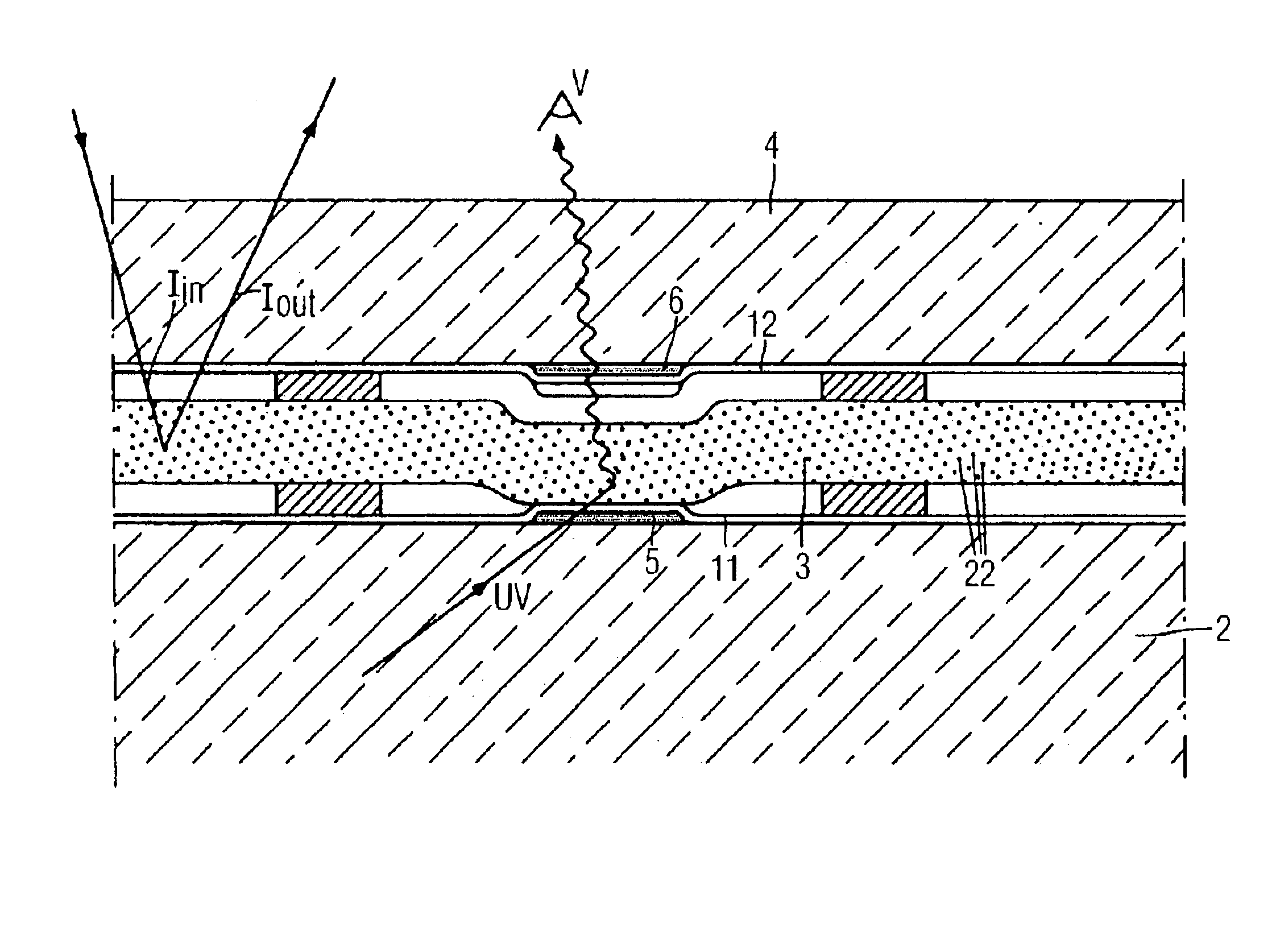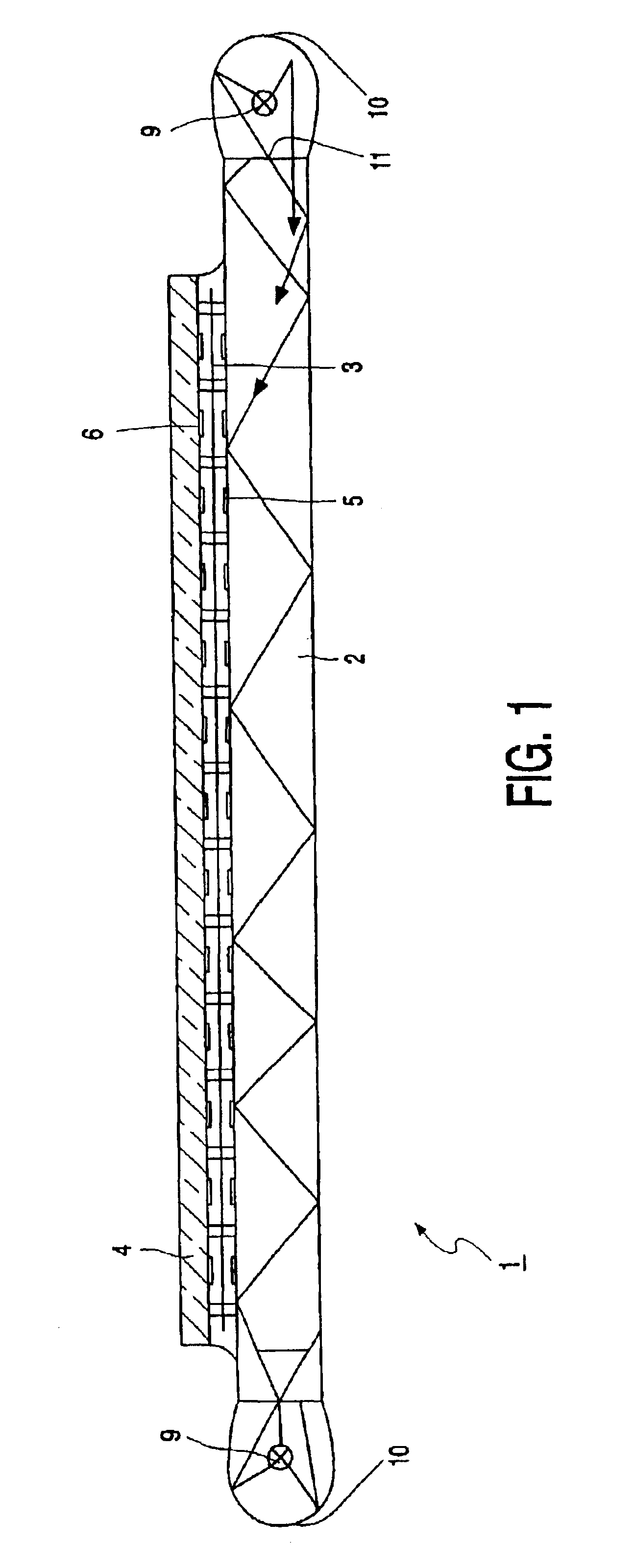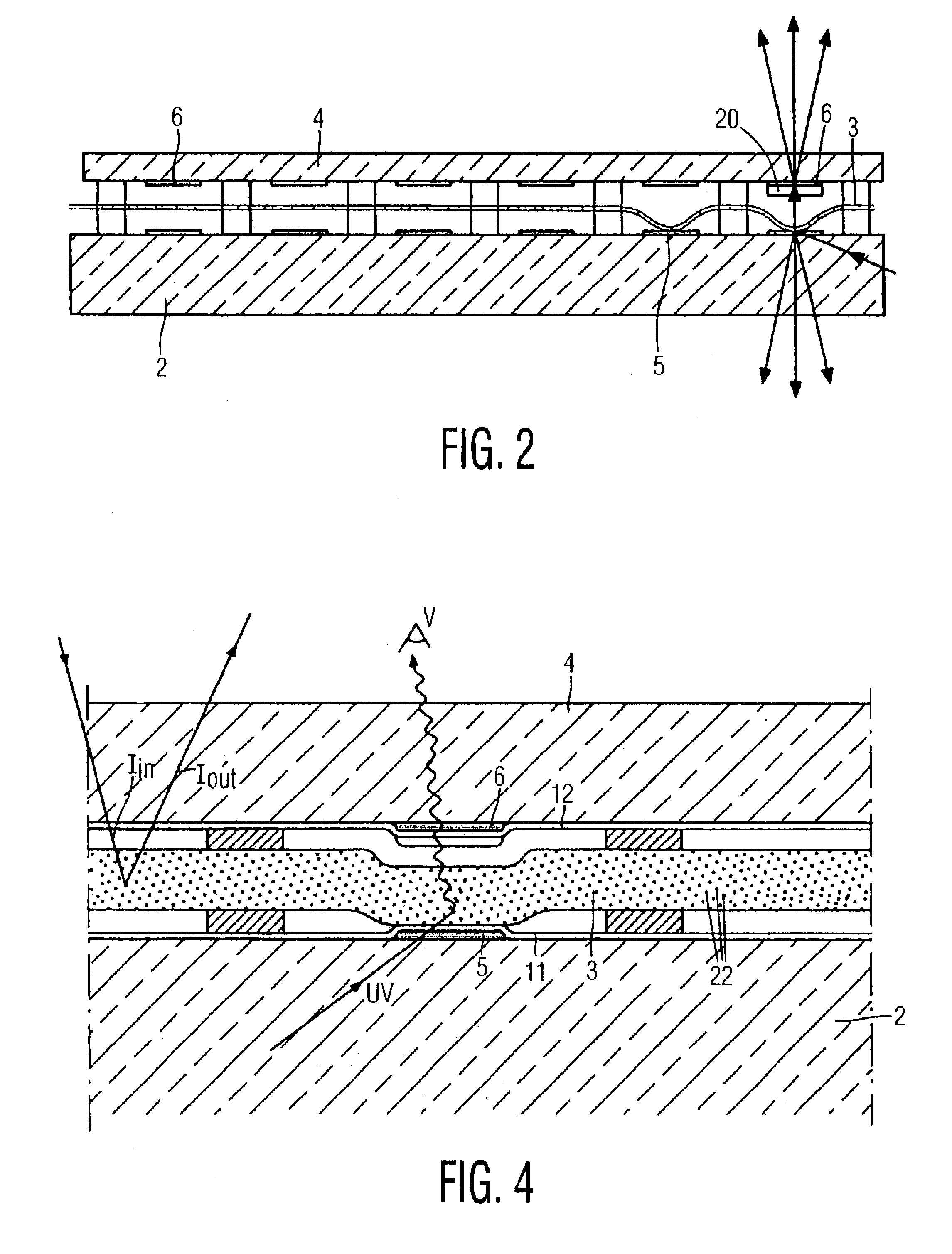Display device comprising a light guide
- Summary
- Abstract
- Description
- Claims
- Application Information
AI Technical Summary
Benefits of technology
Problems solved by technology
Method used
Image
Examples
Embodiment Construction
[0024]FIG. 1 schematically shows a display device 1 in accordance with the invention. Said display device comprises a light guide 2, a movable element 3 and a second plate 4. Electrode systems 5 and 6 are arranged, respectively, on the sides of the light guide 2 and the second plate 4 facing the movable element 3. By locally generating a potential difference between the electrodes 5, 6 and the movable element 3, by applying, in operation, electric voltages to the electrodes and the movable element forces are locally exerted on the movable element, which pull the movable element against the light guide or keep it at a distance from the light guide, preferably against the second plate 4. The display device further comprises a light source 9 which in operation emits UV light. Reflectors 10 are provided. FIG. 2 shows how the movable element 3 lies against the light guide 2. In this state, a portion of the UV light enters the movable element. In this movable element, the UV light is scat...
PUM
 Login to View More
Login to View More Abstract
Description
Claims
Application Information
 Login to View More
Login to View More - R&D
- Intellectual Property
- Life Sciences
- Materials
- Tech Scout
- Unparalleled Data Quality
- Higher Quality Content
- 60% Fewer Hallucinations
Browse by: Latest US Patents, China's latest patents, Technical Efficacy Thesaurus, Application Domain, Technology Topic, Popular Technical Reports.
© 2025 PatSnap. All rights reserved.Legal|Privacy policy|Modern Slavery Act Transparency Statement|Sitemap|About US| Contact US: help@patsnap.com



